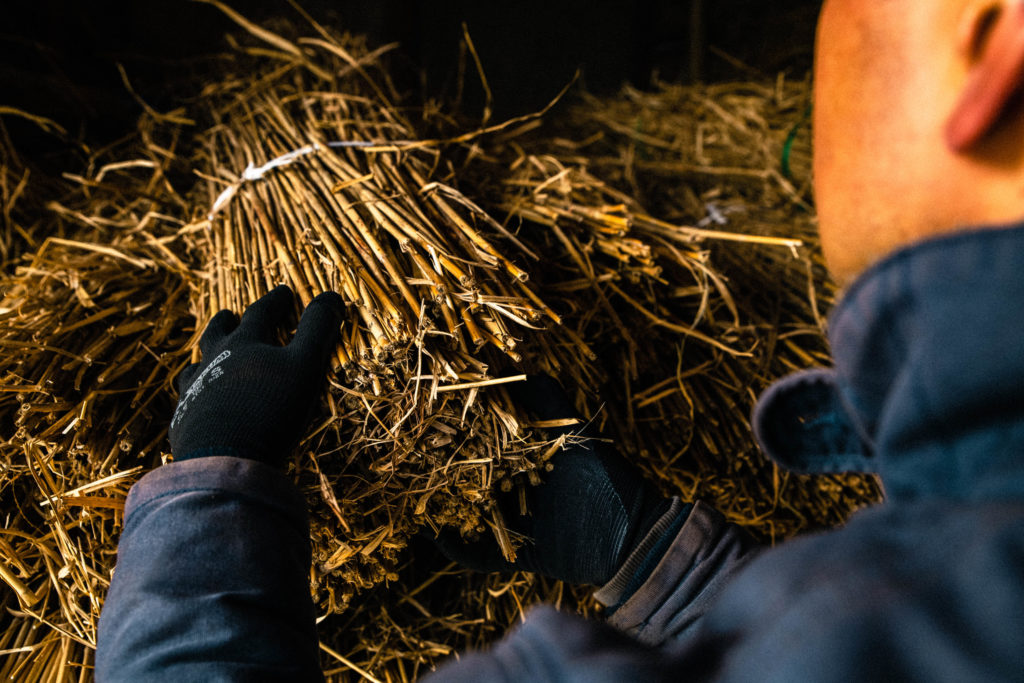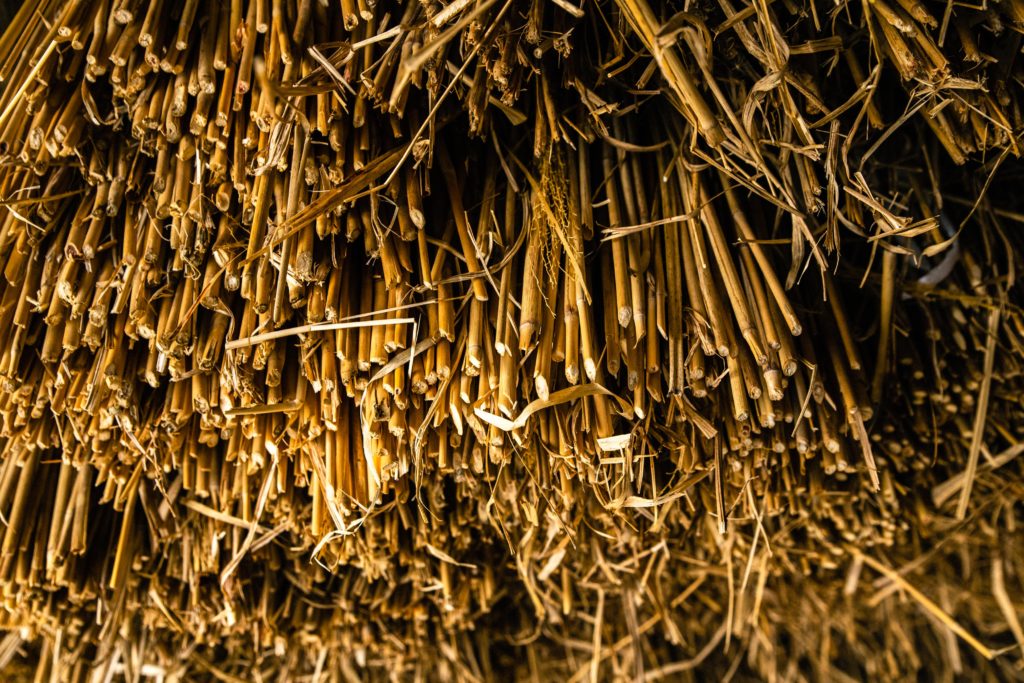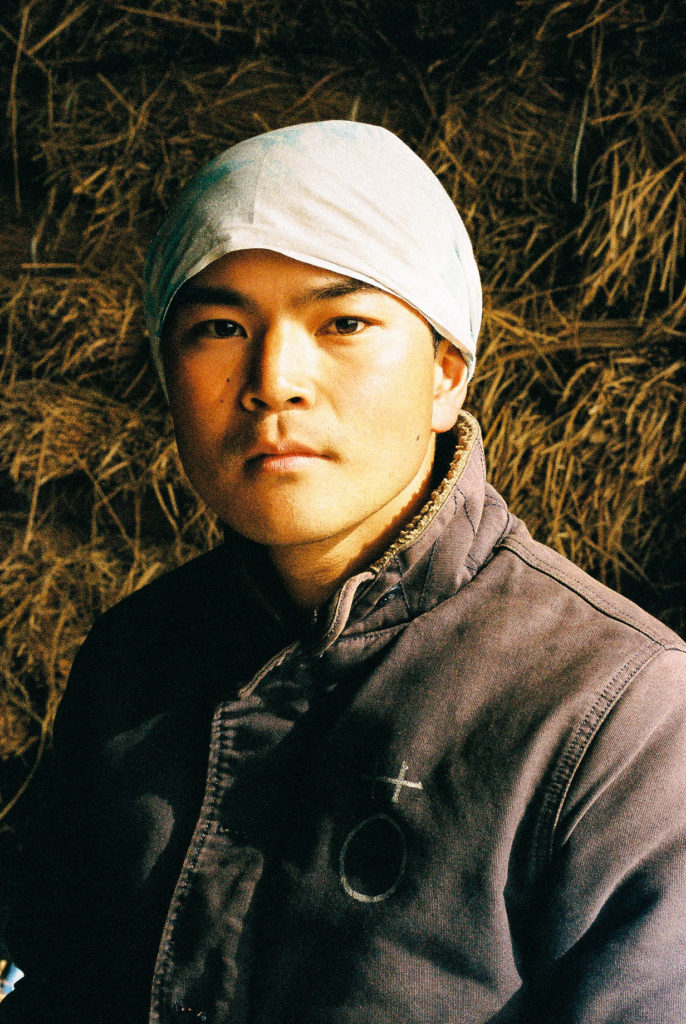Based in Awakawa-cho, Kobe City, Hyogo Prefecture, “Kusakanmuri” is a group of craftsmen who maintain and repair thatched roofs, and render contemporary thatch on store walls and event stages. One man has become an apprentice of Ikuya Sagara, representative of the company. He is 29-year-old Ki’ichi Konishi. How did he come to the decision to enter the world of thatching after his college days? And what does he feel now? We caught up with Konishi-san.

Konishi-san was born in Akashi City, Hyogo Prefecture, to parents running a restaurant. Growing up in an environment close to the ocean and with parents toiling in a kitchen, “fish” was the thing he was most interested in as a child. On his days off, he would play in the ocean and loved fishing. This love of fish led him to attend university in Nagasaki, where he majored in fisheries. “I’ve been interested in the food chain since I was a kid. I always wanted to see this fish eat that fish and this fish eat that shellfish.” He studied the ecosystems of marine organisms, an enduring passion of his, and went on to graduate school.
One day, he was on his way back home to his parents’ house and was leafing through a book at a bookstore when he happened upon “Kusakanmuri”. Sagara-san was featured in an article, where he mentioned the following: “The straw used for thatched roofs is cut from thatch that grows wild in the grasslands. The work of reaping and burning in the field leads directly to the maintenance of the grassland, and the ecosystem of the grassland is preserved.”Konishi explains, “Put simply, while humans are harvesting thatch for their own convenience, the act is also benefiting the natural world. There is no waste in the cycle, and I felt it was a win-win situation.”

As he was considering his post-graduation career, he immediately looked up “Kusakanmuri” and found that they were looking for an apprentice. However, since his father was a chef, when he heard the word “apprenticeship,” he imagined a fearful and demanding environment, such as an apprenticeship at a sushi chef or Japanese restaurant.
“I took a while to muster the courage to contact him. But once I reached out to him, I sensed a very friendly vibe from Sagara-san. After all, Sagara-san was once an apprentice himself, and in an era of diverse occupations and work styles, he was willing to share his thoughts with the current generation about how thatching should be considered a viable career option.”
Thereafter, he began helping out on site work and decided to join Sagara-san, and is now in his third year on the job.“The apprenticeship was completely different from what I had imagined. I had always associated ‘apprenticeship’ with the image of working hard and digging deeper into one’s skills. But thatching itself is not good enough if you can only thatch; you have to be able to do other things as well. Starting with rope work, you have to be able to use all kinds of tools. I was also told in all seriousness, ‘You have to have a girlfriend. He told me, “You can only progress in your work if you can accept other people.”
Currently, he is on site six days a week, continuing his training with his master, his three senior pupils, and his junior apprentices. It is said that the shortest period of training for a thatchworker is five years. After that, she/he can call themself a “thatching artisan” only when they are recognized by their master.

“My business card reads, ‘apprentice thatcher’, and I can’t call myself a craftsman yet. All things being equal, an apprentice would usually finish their training in the remaining two and a half years; I think I may need to stay on for the rest of the year. However, it is also true that my range of skills is growing every day. This comes back to my motivation, but when I was a student, I experienced the Kumamoto earthquake in Nagasaki and the torrential rains in western Japan in Kyoto. At the same time, I saw people who acted on their initiative and overcame the situation under the same circumstances. I felt the power of life, or rather, I felt that my ability to survive was tested when some big trouble occurred, and I have since keenly felt the desire not to be in a hurry in life. In that respect, I feel that mastering thatching has improved my zest for life because I learn a variety of skills in the process.”
“At first glance, it might seem as if my interests have shifted from marine fish research until graduate school to now thatching on land, but there are many interesting parallels. For example, when we are dismantling a thatched roof, we notice that an ecosystem has been created on the roof. Moss grows, birds defecate, plant seeds are found in their droppings, and flowers bloom. The surface of old roofs can also be dirt, and I sometimes find beetle larvae inside. So I am convinced that I am sticking with this path now as an extension of my own interests.”
It is exciting to think of Konishi-san’s future as a guardian of thatching culture.












